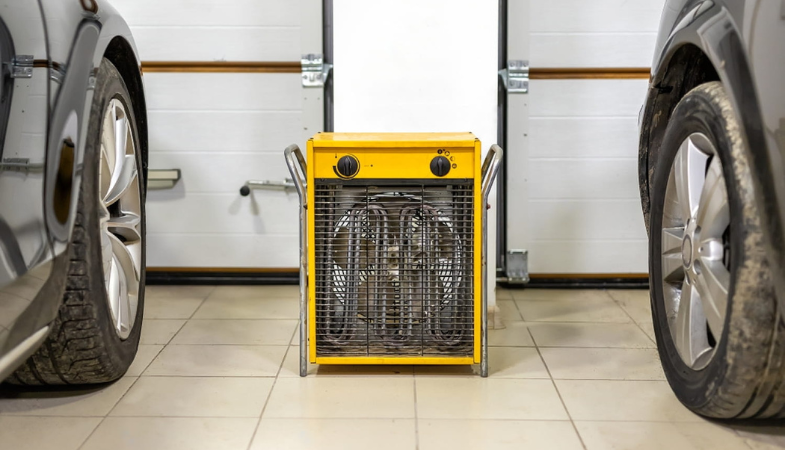
If you have a workshop and a job or hobbies performed outside during the winter, you may find it challenging to stay warm sometimes. A space heater working alone will not do much to keep you and your tools warm. Here are a few tips for heating your garage to a comfortable temperature in winter and keeping it there.
Add Insulation Where Possible
No matter how much power any of your heat sources have, it won’t be easy to maintain any warmth without proper insulation. Many garage walls consist of just the studs, covered on the outside with sheathing and siding. Fibreglass insulation will go a long way in allowing your garage to retain heat and is an easy enough project for most homeowners to do themselves.
Garage doors are another culprit for lost heat. Since they are often manufactured from thin metal, it is not unusual to find frost on the inside during winter. You can keep the cold outside by insulating the garage door and making your garage space an average of 5 to 6 degrees warmer without additional heating. Thanks to garage door insulation kits, it is very manageable for homeowners to insulate their garage doors themselves.
Eliminate Any Drafts
Investing in proper insulation will go a long way in keeping your garage warm in winter, but you should also seal any gaps that let cold drafts blow through. There are three very likely sources of drafts in your garage:
The garage door frame – Garage doors don’t fit tightly in their frames and have small gaps running all around the door. Integrated weather strips will help to close the gaps so that the cold air stays outside.
The bottom of the door – If your garage door is more than a couple of years old, replacing the seal or garage door threshold where the door meets the floor might be a good idea. It is designed to block drafts but can become brittle and crack over time and start to let cold air in.
Windows – Like in your house, windows can be a significant source of cold air in your home. Apply shrink-type film wrap to the inside of the windows, tape it to the frame, and then use a hair dryer to heat the film until it fits snugly, sealing out drafts.
Use One or Two Appropriately Sized Space Heaters
For those who only use their garage periodically throughout the winter, one or two portable space heaters (like the ones used to heat any cold rooms in your home) strategically placed in the garage will do the trick. Space heaters are readily available at any home improvement store, making them an easy solution for your garage heating, but make sure that they are adequately sized for the square footage of your garage.
Consider More Permanent Heating Options
There are plenty of heating options beyond space heaters if you know you will spend winters in the garage each year. A forced air system is among the most popular permanent heating options. They work by blasting hot air into the room; however, if you do work that regularly involves dust and debris, it will be blown around the garage. Ductless heating systems are gaining popularity for garage heating since they are efficient and cheap to run; plus, they often include cooling for when your garage gets hot and stuffy in the summer. A wall-mounted heater is a similar option that is typically easier to install than a ductless heating system, so you may not need to call in a professional.
Install In-Floor Heating
If you spend a lot of time on the floor in your garage, such as when working under a car, you might find the concrete floor rather frigid during the winter. A radiant floor heating system is a solution that is viable only for those who are building a new garage or planning to tear out and replace the concrete floor because it is installed before the concrete is poured. A radiant floor heating system is connected to the boiler, which circulates hot water through the pipes to radiate heat to the floor and any objects placed on it. Remember that in-floor heating is not a DIY project, and you will need to hire a professional experienced in installing radiant floor heating systems.
There are plenty of options to make your garage a comfortably warm space to work in winter. With a bit of ingenuity, you can be out in your workshop through the cold months without discomfort.